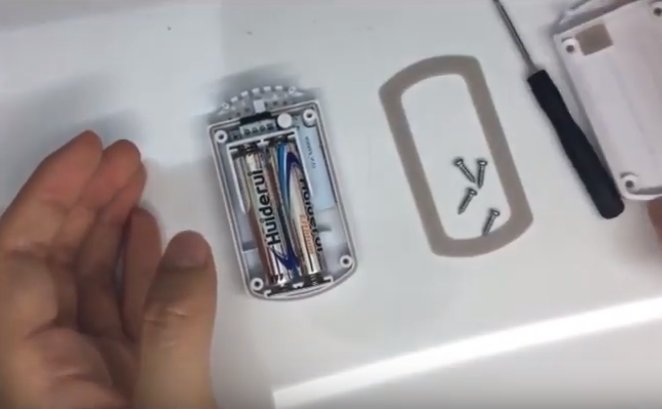We have a new article Using Bluetooth Low Energy (LE). It explains how beacons use Bluetooth LE. We provide a high level description how other Bluetooth LE devices such as smartphones, gateways and single board computers communicate with Bluetooth devices such as beacons.
How to Open Minew S1 Case
We have recently started stocking the Minew S1. Minew have a video showing how to change the battery:
If you are changing the batteries we recommend you use Lithium batteries, such as Energizer Lithium, rather than alkaline batteries. This gives a longer battery life, flatter decrease in voltage over time and better resilience under lower temperatures.
RTLS in Healthcare
There’s a new Mr Beacon video interview with HT Snowday, VP of Innovation and Technology Development at Midmark RTLS. Midmark and HT are formerly of Versus Technology who were acquired by Midmark in Aug 2018.
Midmark RTLS uses a combination of infra-red, 433Mhhz RF, WiFi and Bluetooth to provide tracking of healthcare assets, care givers and patients. It allows medical equipment to be located quickly, key things such as IV pumps to be effectively distributed (par levelling) and the location of care staff and patients to be controlled and monitored. The Bluetooth part of Midmark RTLS is used more for wayfinding using powered, static beacons to mark locations. Systems also allow for health workflow processes including self-rooming to reduce waiting and queuing for care.
Healthcare is increasingly being provided at outpatient rather than inpatient treatment. This is leading to more clinics and treatments centres and the need for technical sophistication to efficiently process patients.
No mention was given to other crucial healthcare usecases we have come across at BeaconZone such as tracking (and temperature) of valuable medicines, tracking porters, wheelchairs and wayfinding from the hospital limits to reception areas.
Read about Beacons For Life Sciences
Physical Web App for Android
There’s a new Physical Web app for Android by the Physical Web Association. The app detects beacons advertising Eddystone URL.
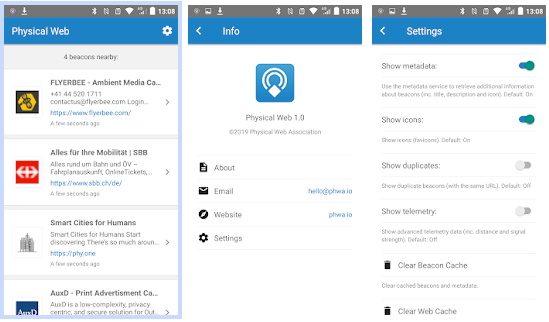
The new app and the Physical Web Association take up the space left by Google abandoning the Physical Web. The association’s apps are unbranded so can be used by anyone to provide for information triggered by beacons.
The Physical Web Association aims to provide the universal apps, metadata services and support. Mr Beacon has a new interview with Agustin Musi and James Grant, founders of the Physical Web Association. It explains how the Association hopes to work with manufacturers to simplify the beacon setup experience. It also mentions opportunities to use Eddystone URLs to lead to progressive web apps to provide device control using web Bluetooth APIs. This was one of the original premises of Google’s ambitions for the physical web.
Unlike Google’s implementation, the Physical Web Association hopes to create a publisher-driven categorisation/ranking system and end user app settings to limit and filter when notifications are shown when beacons are detected in background.
View Eddystone beacons
Debugging Bluetooth on iOS
There’s a new article at Bluetooth.com that explains how to capture Bluetooth packets on iOS. The PacketLogger can decode all protocols defined by the Bluetooth Special Interest Group (SIG) and Apple, perform filtering, automatically highlight problems and search and export data.
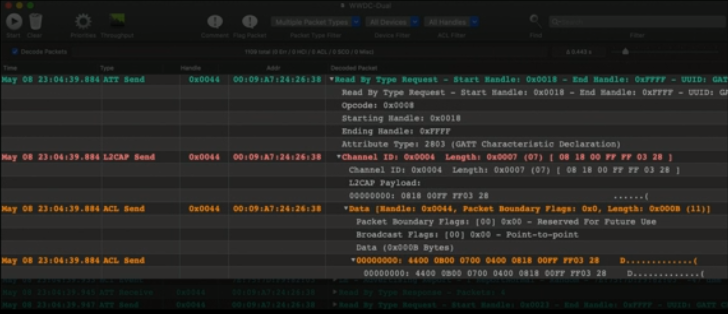
This will work for both Core Location and Core Bluetooth. Core Location is using the iBeacon APIs while the lower level Core Bluetooth allows scanning and connection to any Bluetooth LE devices, not just beacons. It’s best to use the Core Location APIs and only use Core Bluetooth for more involved scenarios not supported by Core Location.
Note that Core Bluetooth, even though it’s lower level, can’t scan the iBeacon UUD, major and minor. Apple hides these values to force you to use Core Location.
There’s also an Apple session video from WWDC 2019 explaining Core Bluetooth and PacketLogger.
BeaconZone Shipping by UPS Courier
As of today we are all sending orders using UPS Standard and Express services rather than via post office tracked domestic and air mail. This is so as to improve international delivery times, make them more predictable and avoid problems due to the busy holiday period and impending postal strikes.

All UK orders now have next day delivery to business areas. International customers can now select between UPS Standard by road or UPS Express by air. Our delivery web page lists how UPS Standard delivery times vary by country. UPS Express arrives next business day to most European countries and the second business day to business areas in the US and Canada.
FIND Framework for Internal Navigation and Discovery
FIND is an open source indoor locating system for home automation, indoor local positioning and passive tracking. It uses your smartphone or laptop to pinpoint your position in your home or office with a location precision of below 10 sq ft.
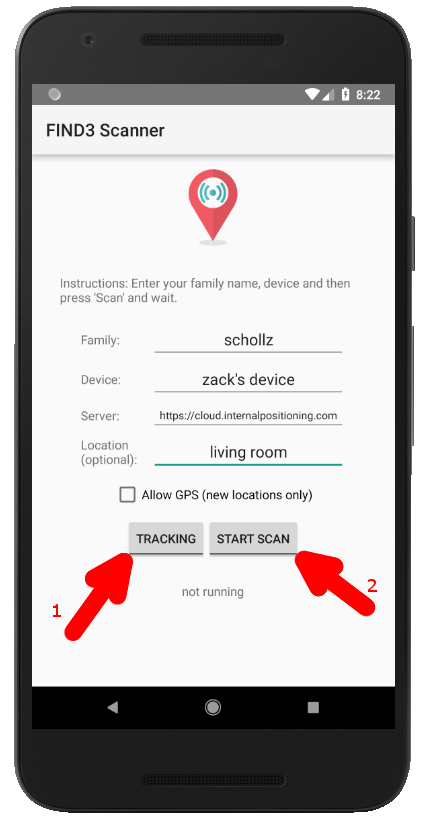
FIND uses scanning of WiFi and Bluetooth:
FIND compiles these different signals can be compiled into a fingerprint which can be used to uniquely classify the current location of that device
Read the documentation, the FAQ and source code on GitHub.
Pushcut for iOS Updated
Pushcut, the HomeKit and workflow automation iOS app, has some updates that now allow iBeacon triggered in background. Delayed notifications and ‘do not repeat’ durations are also possible with iBeacon triggers.
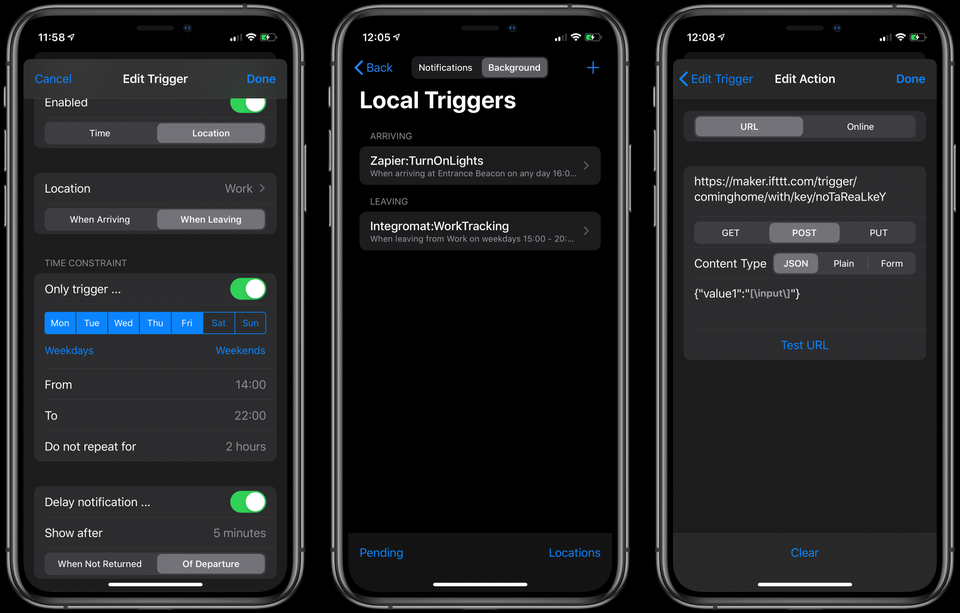
Pushcut allows you to execute online actions and web requests in the background providing IFTTT triggers from an iBeacon.
Pushcut is listed in our Solutions Directory.
Changing the Minew D15N Battery
Bluetooth Low Energy in Noisy RF Environments
Michael Spork, Carlo Alberto Boano and Kay Romer of the Institute for Technical Informatics, Graz University of Technology, Austria have a recent paper on Improving the Timeliness of Bluetooth Low Energy in Noisy RF Environments.
The paper looks into the affect of radio frequency (RF) noise on connection based Bluetooth LE communication and provides a mechanism that significantly improves the time taken to send a message in noisy environments. To be clear, beacon-related scenarios rarely use GATT connection based communication and instead use connection-less communication repeatedly broadcasting short packets on 3 advertisement channels (37, 38, and 39). Connection tends to be used only to set up beacon parameters or for more advanced scenarios where a device such as a smartphone connects to the beacon for bidirectional data transfer to get real time data, for example, more timely motion detection.
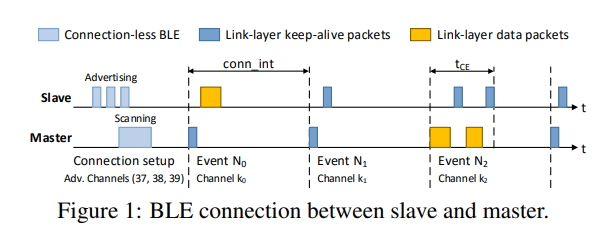
The authors distinguish their research as experimentally derived as opposed to analytic (just using calculations). They show how the Bluetooth Adaptive Frequency Hopping (AFH) algorithm allows Bluetooth devices to blacklist interfered channels and re-transmit packets on different frequencies until interference is avoided.
The paper shows how the AFH algorithm mitigates the effects of Wi-Fi interference near a Bluetooth master by blacklisting channels. An interesting insight is that the master is unable to detect Wi-Fi interference near the Bluetooth slave and is unable to adapt resulting in UDP messages being significantly delayed.
“Our experiments show that BLE connections are eventually able to successfully transmit all data packets, even under heavy Wi-Fi or Bluetooth interference”
The authors demonstrate that by lowering the connection interval in response to changes in the link quality, an application can reduced the average number of packets delayed from 6.18% to 0.54%.
Read about Bluetooth LE on the Factory Floor
